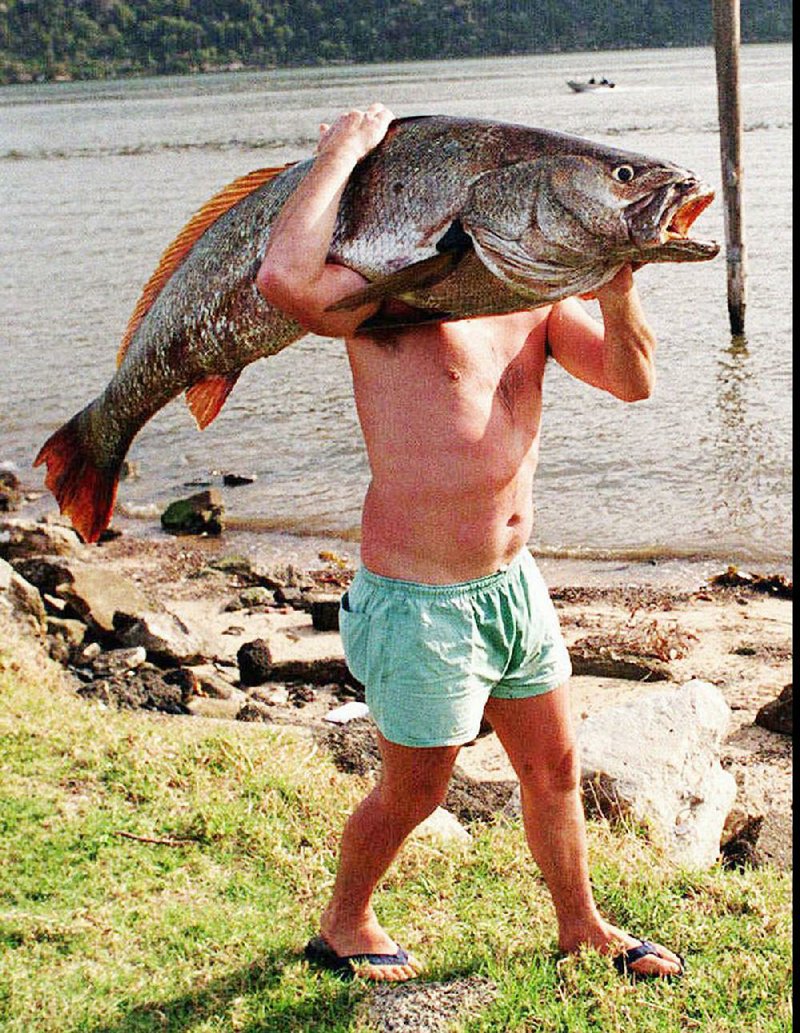Dear Otus,
I checked out the Memphis Pyramid Bass Pro Shops during Liberty Bowl weekend and they had a giant fish in the aquarium labeled "Native Lonoke Minnow." I thought minnows were tiny. What's up with that?
-- Jack Crevalle,
Sherwood
Dear Jack,
It was wholly a pleasure to hear from you. Indeed, our poor, small state is dead last in so many categories (or near the top in undesirable ones) that we must brag when we can.
As a card-carrying native Arkansan (born in Fayetteville), I'm pleased to point out that the Natural State is No. 1 in the entire world in the production of bait fish. We're talking minnows. Arkansas produces billions of the little rascals every year, mostly in Lonoke, Prairie and Monroe counties.
If fisher folk in those highfalutin states such as Florida and Indiana want to hook up with a creek chub or a comely shiner, they've got to look to us for their bait. And right there near Lonoke is where the world's largest minnow farm is located.
Modestly labeled Pond No. 14 at Olafson's Minnow Farms, it's the largest of the outfit's 129 ponds. No. 14 is 3.7 miles southwest of downtown Lonoke, just northeast of the intersection of U.S. 70 and Arkansas 15.
No. 14 covers 12.28 square miles (7,859 acres) in a bend of Bayou Meto and is visible from 53 miles away at 30,000 feet up. Pilots arriving from points east use it to line up on the Little Rock airport.
The pond is so huge that it has a tiny, but measurable, tidal schedule. That's because as sprawling as Pond No. 14 is, it's only 27 inches deep. And therein lies the problem.
No. 14 is crisscrossed by 387 miles of baffle levees that allow workers access to the minnows. But the dirt levees also allow migrating birds to feast on the fish as if they were one huge aquatic buffet.
Cormorants, herons, pelicans and all manner of piscivorous fowl flock to Lonoke each year on their migratory flyways. These include pesky goosanders and vexatious red-breasted mergansers. They darken the sky from horizon to horizon for several weeks each fall headed south.
The birds gorge until they are unable to fly. The predation problem had become so prominent that Bjorn Olafson, fifth-generation owner of the farm, decided to do something about it last summer.
"We tried stringing wire and netting over the ponds but the birds got in anyway," Olafson said in an interview with the Lonoke Democrat. "We even tried putting shiny pie pans on sticks but we felt the birds just laughed at us."
That's when Olafson teamed with the University of Arkansas at Hazen Benthic Studies Department for a proactive solution. They bred the world's largest minnow -- a huge, voracious bird-eating minnow.
"It seems only right that since we're the world's largest minnow farm, we'd have the world's largest minnow," Olafson said. "If I were a redbreasted merganser or a variegated egret, I'd think twice now about landing in Lonoke County."
The new minnow species, known in scientific circles as Campostoma pimephales anomalum rex (giant stoneroller fathead minnow), grows up to 4 feet long and can weigh 120 pounds.
"This is definitely the king of the family Cyprinidae," Olafson said. "They eat their weight in cormorants every day for their first eight months."
Olafson has a video posted on YouTube of four giant stonerollers converging on a flock of feeding cormorants and making short work of them. In a matter of seconds all that was left was a pile of filoplumes and beaks.
"The big minnows don't like the beaks," Olafson noted. "Spit 'em right out."
The only problem with the stonerollers is that once they reach their full growth, they become sluggish and eat only a stray crow or an occasional careless blue jay.
It's at that point that Olafson employees cull them, pack them in ice and ship them to Uncle Buck's Fishbowl and Grill at Bass Pro Shops in Memphis to be processed into their famous Fish Filet Meuniere and Fish Stick Enchiladas.
Olafson expects the next big feeding frenzy to be when the Canada geese stop back by on their way north in late February. "The honkers put up a fight," he said. "But my money's on the fish."
Until next time, Kalaka cautions you that giant minnows may be cute as fingerlings, but when fed on parakeets and canaries, they outgrow the typical family aquarium in about two weeks.
Disclaimer
Fayetteville-born Otus the Head Cat's award-winning column of
Z humorous fabrication X
appears every Saturday. Email:
HomeStyle on 01/23/2016

Disclaimer: Fayetteville-born Otus the Head Cat's award-winning column of 👉 humorous fabrication 👈 appears every Saturday.

